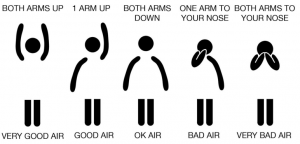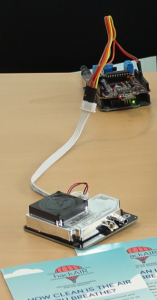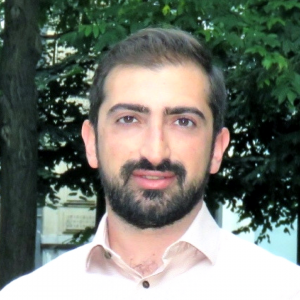Hundreds of people across Europe have set up hackAIR sensors in the past months. Behind each of the sensors is a story – about air pollution and why it is of concern for us. We asked Kyrre Sørensen from Bergen in Norway why he set up his hackAIR sensor:
“Traditionally we had problems in Bergen with air quality. All the roads in the regions go through the inner city here, and the mountains surrounding the city keep fresh air from coming in. In Norwegian, we call this situation giftlokk (“poison-lid”). It gives us an inversion that traps air pollution and smog close to the ground.
 Together with the green movements and the local green party, we wanted to do something about the situation. For that, we first needed more data to find out why, when and where the giftlokk is worst, and what we can do to stop it and warn people.
Together with the green movements and the local green party, we wanted to do something about the situation. For that, we first needed more data to find out why, when and where the giftlokk is worst, and what we can do to stop it and warn people.
Official air quality data was not enough: the city had only set up five expensive sensors, only two of them downtown where the problem is the biggest. With hackAIR, we are hoping to monitor that better. We can set up more sensors – also mobile ones that we can use to identify where air pollution is worse, and what the source is.
Chasing the source of air pollution in Bergen
As we mostly use electricity for heating, and the winter is not that cold in Bergen, we were curious: Could the problem still be that some heat their houses with firewood or with oil, like some big buildings do?
Could it be cars? Our region is rapidly changing to electric cars: every second new car is now either electric or a plug-in hybrid. 17 % of the cars passing the toll roads are now electric. But we use winter tires, could that be the source of the particles? Bergen is also famous for its rain, and that causes many to use cars instead of umbrellas.
Bergen is also the biggest cruise port in Norway. On some days we have five big cruise ships with up to eleven thousand tourists. Could that also cause the problems?
Using data to find the cause of air pollution
I wanted more data, so I ordered a hackAIR home sensor early, and helped to organise a workshop in Bergen. Before the workshop I ordered the hackAIR mobile sensor. My first one got destroyed in the process of soldering, but I got a new sensor working. I now have 3 sensors working, one centrally in Bergen, one waiting to be placed somewhere, and one mobile one, currently brought with me on summer vacation.
It’s really hard for normal people to solder their own sensors, and it is still too difficult to programme sensors and check data. Why not just one sensor to connect to your phone without anything else to do? What would it take to sell pre-built ones? (Ed: hackAIR is looking for commercial partners that might want to take this on – talk to us!)
My political party might buy a lot of sensors to hand out or lend out to those applying or living in interesting places, for example near the cruise-ships. We will need pre-built ones to make sure they all work as they should, and to be sure they will be ready to set up.
So many ideas, so much work to do…
There are so many ways in which the hackAIR community could use their data more. Like twitter-bots warning when the air is bad, daily reports of the last days or the most beautiful graphs to spread on social media.
More open data with easier access would also mean that we can implement more cool ideas, like you get a message when your local or own sensor drops to bad quality, when its not sending data, etc.
The app should store data on a file on your phone, so other apps, like IFTTT or other automatic trigger-programs can use it. How about a widget or background image changing according to your and others air quality data? You could for example make your phone led-light change according to your sensor data, that would be cool.
How do I make graphs from my data more easily than with cumbersome exports? Can hackAIR do it for me, and have it post to my social media for me?
And how can I share my data in txt to everyone? Instead of the API calls, we could have hackair.eu/sensorid/latestweek.txt or a graph as an image like /sensorid/24hgraph.jpg. At the moment, my friends cannot access data from my sensor and analysing data from a specific geographic region is difficult. I want this to be easier.
I really love hackAIR, and am wondering what will happen with the platform when the year is done. I am no researcher, but I would love to help it develop further. We should just try to place as many sensors as we can, to give researchers and other interested parties useful data to find out more about the particles we breathe in every day. We could also have 500 sensors to send to areas that are affected by events that need monitoring, like a volcanic eruption, big forest fires and similar unforeseen events.
Overall, 10 000 sensors in Europe before 2020 should be the goal!”

















 Send us a picture of the sky where you are currently spending your summer – using the
Send us a picture of the sky where you are currently spending your summer – using the 
 Together with the green movements and the local green party, we wanted to do something about the situation. For that, we first needed more data to find out why, when and where the
Together with the green movements and the local green party, we wanted to do something about the situation. For that, we first needed more data to find out why, when and where the 